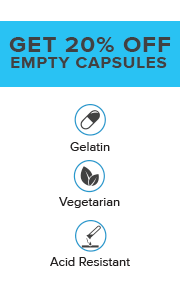| FREE TRIAL FORMULATIONS MY ACCOUNT | |
 | |
| Our Compounding Knowledge, Your Peace of Mind | |
| July 26, 2019 | Volume 16 | Issue 30 | |
| |||||||||||||||||||||||||||||||||||||||||||||||||||||||||||||||||||
| |||||||||||||||||||||||||||||||||||||||||||||||||||||||||||||||||||
|
Question: Why is there a discrepancy between USP <797> and the BUDs provided in the official USP Compounding Monographs? Answer:
USP <797>, Section 14.3 Establishing a BUD for a CSP states: “Table 11 establishes the longest permitted BUDs for Category 2 CSPs.� First, let’s look at the BUDs in Table 11:
For Terminally sterilized CSPS sterility tested and not sterility tested, the maximum BUDs are:
Second, let’s look at the BUDs (Days) in the official USP sterile compounding monographs:
Third, it appears that the above official USP formulations will be limited to the BUDs in Table 11 and pharmacists CANNOT use the BUD that is provided using stability-indicating analytical methods in the official USP compounding monograph. Final Comment: This is another example of where USP <795>, <797>, and <800> are not all scientifically based and are inconsistent with each other.
+++ REMINDER: For those State Boards of Pharmacy that are not adopting the USP chapters and are preparing their own or using their own modifications of the chapters, easily-modifiable alternative versions of Chapters <795>, <797>, and <800> have been prepared and are available as a free download for use by state boards of pharmacy to modify for their individual states at the following website.
Also, you may wish to download these alternatives and send them to your state board of pharmacy for consideration. Also, send the following Sterile Compounding Consensus Statement, available at the same website.
| |||||||||||||||||||||||||||||||||||||||||||||||||||||||||||||||||||
|
News House Panel Claims Juul Targeted Schools, Camps, and Youth Programs
| |||||||||||||||||||||||||||||||||||||||||||||||||||||||||||||||||||
|
Did You Know ... …the following regarding Common Sense (CS)? Good health and good sense are two of life’s greatest blessings (Publius Syrus) | |||||||||||||||||||||||||||||||||||||||||||||||||||||||||||||||||||
|
IJPC Now on Facebook and Youtube Become a fan of the IJPC Facebook page and share ideas, photos, and keep up to date with the latest compounding information - http://www.facebook.com/IJPCompounding View our growing collection of educational and training videos at www.ijpc.com/video or by subscribing to our Youtube channel at https://www.youtube.com/IJPCompounding. | |||||||||||||||||||||||||||||||||||||||||||||||||||||||||||||||||||
|
Looking Back Bristles scratched,
|
| Copyright 2019 International Journal of Pharmaceutical Compounding, Inc. 122 N Bryant Ave, Edmond OK 73034 |
Manage my Email: Subscribe / Un-Subscribe |
Comments or Questions: info@compoundingtoday.com |
|
| Reprints & Permissions: Reprints@ijpc.com | |||




